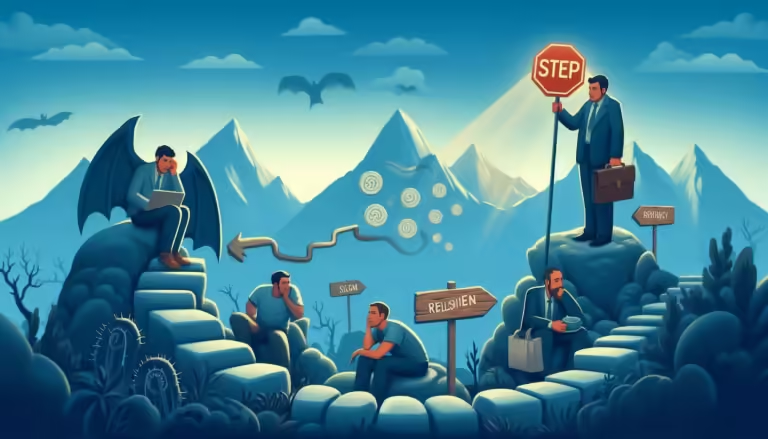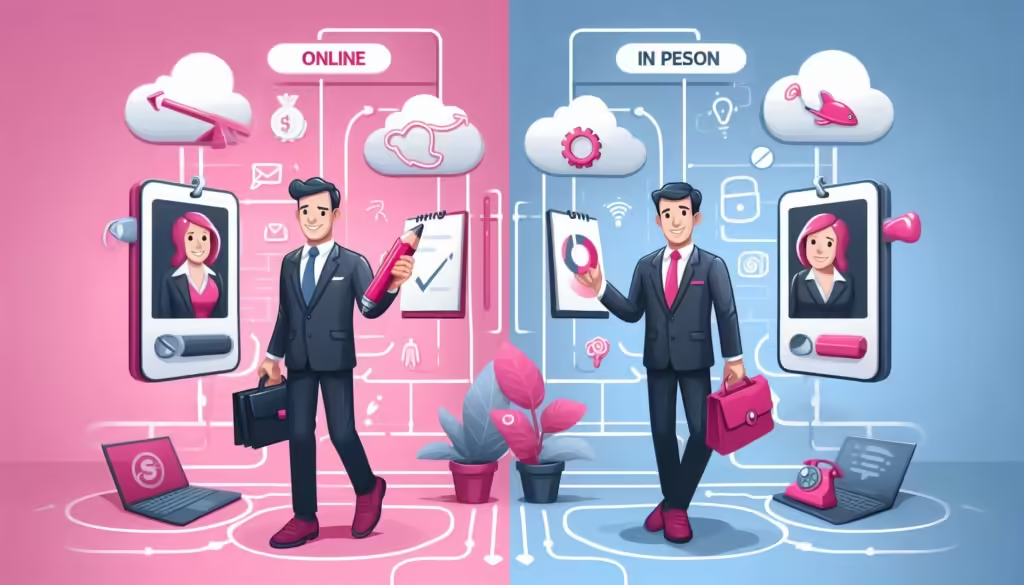10 Tips for Handling Indecisive Customers


1. Understand the Root Cause of Their Indecision
What It Is
Understanding why a customer is indecisive is the first step toward helping them make a decision. Their hesitation might stem from fear, confusion, or lack of trust.
Why It’s Important
If you don’t address the underlying issue, you risk losing the sale and frustrating the customer. You should Understand their hesitation that allows you to tailor your approach to meet their needs accordingly.
How to Do It
- Listen Actively: Pay attention to verbal cues and emotions.
- Empathize: Show that you understand their concerns.
Example
A customer at a car dealership hesitated to choose between two models. By asking detailed questions, the salesperson discovered they were worried about fuel efficiency. This insight helped the salesperson focus on relevant benefits.
Case Study
At Zappos, customer service reps discovered that many indecisive buyers needed more information about shoe sizing. They added detailed size charts and customer reviews, which increased conversion rates by 25%.
Expert Insight
Daniel Goleman, author of Emotional Intelligence, says:
“Understanding emotions is key in decision-making. Addressing a customer’s fears directly can build trust and confidence.”
2. Simplify Their Choices
What It Is
Reducing the number of options presented to an indecisive customer can help them focus and make a decision more easily.
Why It’s Important
Too many options can overwhelm customers, leading to analysis paralysis, where they avoid making any decision at all.
How to Do It
- Curate Options: Present two or three tailored options instead of many.
- Highlight Key Features: Focus on the most relevant aspects of each choice.
- Use Comparisons: Create a simple side-by-side comparison chart.
Example
An electronics store offered a customer five smartphone models but realized they were overwhelmed. The salesperson narrowed the options to two based on their budget and needs, making it easier for the customer to decide.
Case Study
Netflix observed that users overwhelmed by too many choices often abandoned the platform without watching anything. By introducing personalized recommendations, user engagement improved by 75%.
Expert Insight
Sheena Iyengar, The author of The Art of Choosing, Said that:
“Less is more. Simplified choices reduce stress and lead to better decisions.”
3. Build Trust Through Social Proof
What It Is
Social proof includes customer reviews, testimonials, or case studies that demonstrate the value of your product or service.
Why It’s Important
Indecisive customers often fear making the wrong choice. Seeing others’ positive experiences can reassure them and build confidence in their decision.
How to Do It
- Share Testimonials: Highlight success stories similar to the customer’s situation.
- Use Ratings and Reviews: Showcase high ratings or popular picks.
- Offer Case Studies: Provide detailed examples of how others benefited from the product.
Example
A customer unsure about purchasing a new software tool decided after the salesperson shared testimonials from companies in the same industry.
Case Study
Airbnb leveraged user reviews to build trust among travelers. Customers hesitant to book a stay felt more comfortable after reading detailed, positive reviews, increasing bookings by 40%.
4. Offer a Trial or Guarantee
What It Is
Providing a trial period or a satisfaction guarantee allows customers to test your product or service without risk.
Why It’s Important
Risk-free offers reduce hesitation and provide customers with the confidence they need to move forward.
How to Do It
- Money-Back Guarantees: Assure customers they can get a refund if unsatisfied.
- Flexible Returns: Offer easy return policies for peace of mind.
Example
A customer hesitated to buy a mattress online. The company’s 100-night trial offer convinced them to make the purchase, knowing they could return it if it didn’t meet their expectations.
Case Study
Warby Parker introduced a “Home Try-On” program, allowing customers to try five pairs of glasses for free. This reduced buyer hesitation and increased their sales by 30%.
5. Create a Sense of Urgency
What It Is
Creating urgency involves encouraging customers to act quickly, either by highlighting limited availability or exclusive offers.
Why It’s Important
Indecisive customers often delay decisions indefinitely. Urgency can motivate them to take action sooner rather than later.
How to Do It
- Time-Sensitive Discounts: Offer deals that expire soon.
- Scarcity Tactics: Mention limited stock or high demand.
- Emphasize Benefits: Highlight what they’ll miss by waiting.
Example
An online retailer informed a customer that a popular item had “only 3 left in stock.” This prompted them to make the purchase immediately.
Case Study
Booking.com uses urgency messaging, such as “Only 2 rooms left!” or “15 people are currently looking at this property,” to drive quick bookings. This strategy increased their conversions by 20%.
6. Educate the Customer
What It Is
Providing clear, relevant information about your product or service helps customers feel informed and confident in their decision.
Why It’s Important
Indecisiveness often stems from a lack of understanding. Educating customers removes confusion and empowers them to make a choice.
How to Do It
- Use Demos: Show how the product works.
- Provide Resources: Share brochures, FAQs, or videos.
- Answer Questions: Be patient and thorough in addressing their concerns.
Example
A customer considering a subscription box service was unsure about the value. The salesperson walked them through a demo, highlighting features, which sealed the deal.
Case Study
HubSpot increased sign-ups by 15% after implementing live product demos for indecisive leads, showing them exactly how the software could solve their problems.
Expert Insight
Jay Baer, author of Youtility, says:
“Educate first, sell second. Customers who understand your product will make decisions faster.”
7. Focus on Benefits, Not Features
What It Is
Highlighting the benefits of your product or service involves showing customers how it will solve their problems or improve their lives rather than just listing technical details.
Why It’s Important
Indecisive customers may struggle to connect with abstract features. Focusing on benefits helps them envision the value your offering brings, making the decision easier.
How to Do It
- Identify Pain Points: Understand what the customer needs.
- Tailor the Message: Relate specific benefits to their situation.
- Paint a Picture: Use scenarios or success stories to illustrate results.
Example
A customer hesitated to buy a fitness tracker. Instead of listing features like “heart rate monitor,” the salesperson emphasized how it could help track progress and stay motivated toward fitness goals.
Case Study
Apple emphasizes benefits like “Take professional-quality photos” instead of listing camera specs for their iPhones. This messaging resonates with users, boosting sales even in competitive markets.
8. Provide Visual Aids
What It Is
Visual aids include charts, videos, demonstrations, or even simple sketches that help customers understand the product or service better.
Why It’s Important
Indecisive customers might have difficulty visualizing the impact of your offering. Visuals can simplify complex ideas, making the decision-making process more tangible.
How to Do It
- Use Demonstrations: Show the product in action.
- Create Comparisons: Use graphs or images to compare options.
- Leverage Technology: Offer AR/VR tools for interactive experiences.
Example
A furniture store used augmented reality to help a hesitant customer visualize how a sofa would look in their living room. This helped them make the purchase.
Case Study
IKEA’s AR app allows their customers to see how the furniture fits in their space. This feature significantly reduces buyer hesitation and has contributed to higher online sales.
Expert Insight
Nancy Duarte, communication expert, advises:
“Visuals have power to clarify, inspire, persuade and influence. Use them to turn uncertainty into clarity.”
9. Offer Personalized Recommendations
What It Is
Personalized recommendations involve tailoring your suggestions to the specific needs, preferences, or budget of the customer.
Why It’s Important
Generic recommendations can overwhelm or alienate indecisive customers. Personalization builds trust and makes the customer feel understood, increasing the likelihood of a decision.
How to Do It
- Ask Specific Questions: Learn about their preferences or challenges.
- Use Data: If applicable, leverage past purchase behavior or preferences.
- Be Honest: Avoid upselling products they don’t need.
Example
An online clothing retailer used a quiz to suggest outfits based on the customer’s style and body type, helping an undecided shopper complete their order.
Case Study
Amazon’s recommendation algorithm drives over 35% of its sales by providing personalized suggestions based on user browsing and purchase history, reducing decision fatigue.
10. Be Patient but Proactive
What It Is
This approach involves giving customers the time they need to decide while also proactively guiding them toward a resolution.
Why It’s Important
Pressuring indecisive customers can backfire, but leaving them entirely alone might result in lost sales. Balancing patience with subtle nudges keeps the process moving forward.
How to Do It
- Set Follow-Ups: Schedule a time to check back without being pushy.
- Provide Gentle Reminders: Use emails or messages to remind them of benefits or limited-time offers.
- Stay Available: Let them know you’re there to answer questions anytime.
Example
A customer exploring a financial investment hesitated for weeks. The advisor patiently followed up weekly, providing additional resources each time, until the customer felt confident to commit.
Case Study
Slack found that following up with trial users just before the trial ended—with educational emails and support—converted 70% of hesitant users into paying customers.
Expert Insight
Richard Branson, founder of Virgin Group, says:
“Patience combined with persistence can turn ‘maybe’ into ‘yes.’ Show them you care, and they’ll come around.”
Conclusion: Tips for Handling Indecisive Customers
FAQs
They might be overwhelmed, lack information, fear making a wrong choice, or need more confidence in the product.
Limit options to two or three tailored choices and highlight key benefits to avoid overwhelming them.
Sharing testimonials, reviews, or case studies builds trust and reassures customers about their decision.
Yes! Risk-free trials or money-back guarantees reduce fear and help customers feel more confident.
Creating urgency, like limited-time offers or low-stock alerts, encourages quicker decision-making.
Visual aids like demos, charts, or AR tools simplify complex ideas and help customers visualize outcomes.
Tailored suggestions show you understand their needs, making it easier for them to decide.
Be patient but proactive—schedule check-ins, provide reminders, and stay available for questions.
Share this post




Chiranjeev Jaiswal
Chiranjeev Jaiswal (M.B.A. and P.G.D.M.in Marketing from IM-BHU) launched "Vibrant Marketer" out of a deep passion for all things marketing. After years of working in the industry, he realized that marketing success isn’t about following the same playbook—it’s about staying ahead of the curve and thinking outside the box.












